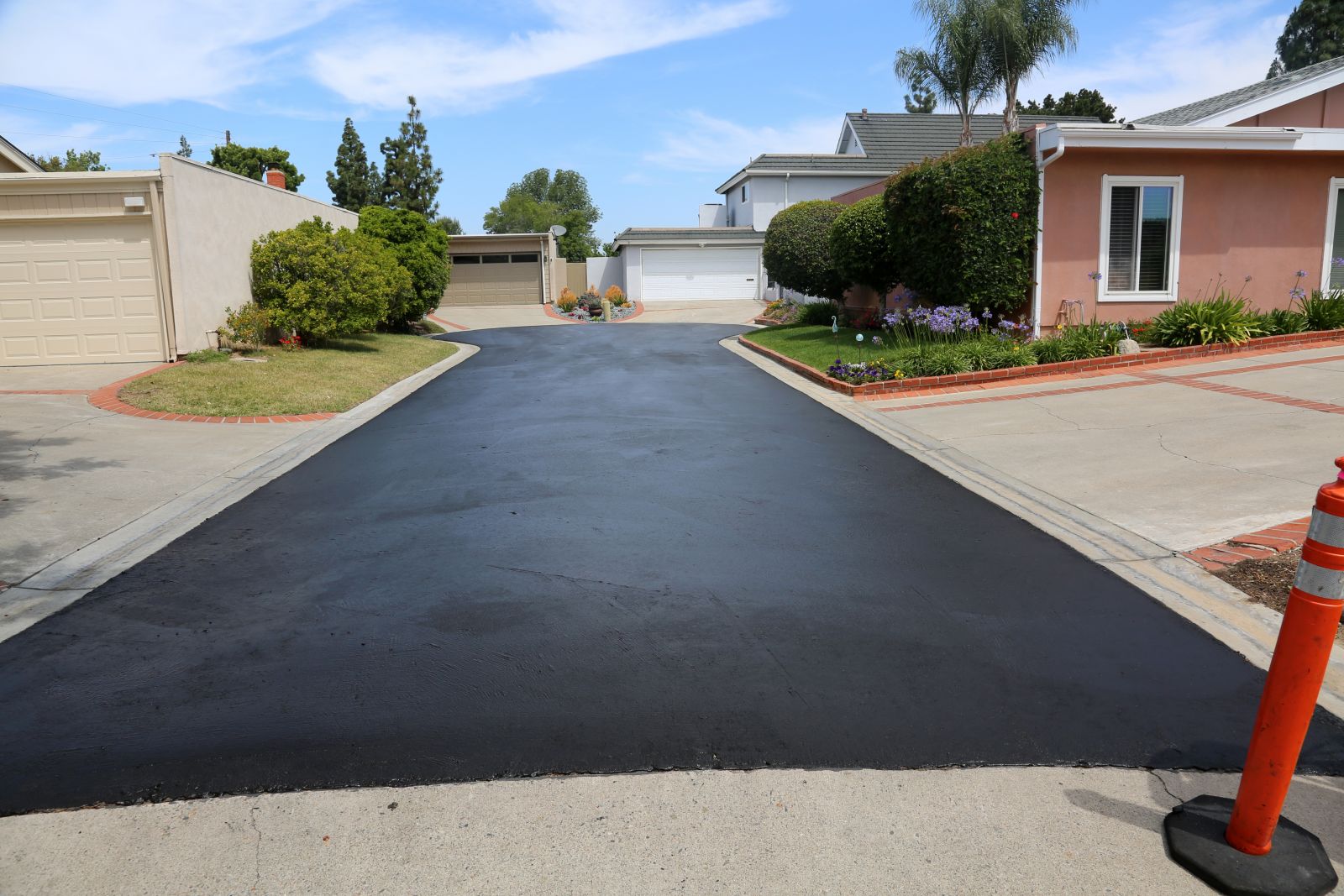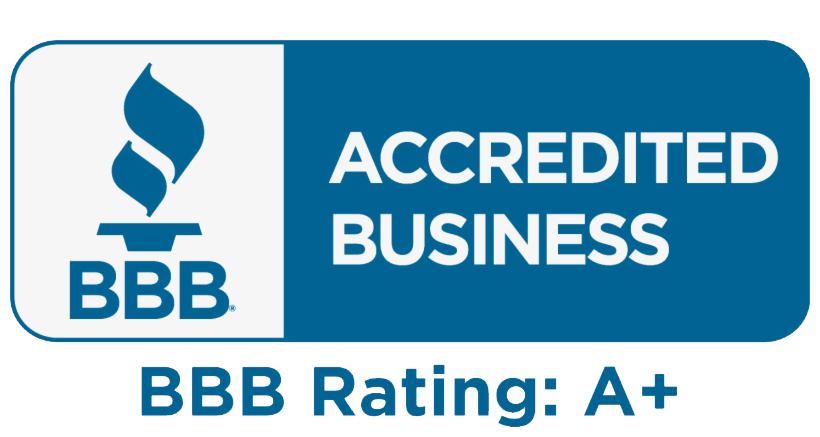Blog

How to Seal Asphalt and Elevate Your Home with Basement Finishing
If you're asking yourself, how do I seal my asphalt driveway? you're not alone. Asphalt sealing is a crucial part of maintaining your driveway’s longevity, protecting it from damage caused by weather, UV rays, and the wear and tear of daily use. Properly sealing your asphalt not only extends its life but also enhances its appearance, giving it that sleek, black finish that makes your driveway look brand new.
While you’re working on improving your home’s exterior, consider creating value indoors as well by planning a basement finishing project. By transforming your basement into a functional living space, you can unlock additional square footage, add flexibility to your home, and make your property even more attractive. Together, these upgrades can give your home a fresh new feel, inside and out.
In this in-depth guide, we will explore everything you need to know about asphalt sealing—from why it's necessary to the step-by-step process of sealing your driveway. Whether you're a homeowner looking to DIY or someone preparing to hire a professional, this guide will ensure that you understand the best practices for sealing asphalt.
Basement Finishing: Turn Unused Space into Functional Living Areas
A properly sealed driveway protects your home’s exterior, but a basement finishing project can enhance your interior in ways that are both practical and visually appealing. Whether you envision a cozy family room, a modern home office, or even a private gym, finishing your basement opens up endless opportunities for added functionality.
Basement finishing is also a smart financial move—boosting property value and improving energy efficiency by insulating previously unused spaces. Pairing this project with asphalt sealing ensures that your entire home feels refreshed and upgraded, giving you both enhanced curb appeal and a more livable interior.
Why Should You Seal Your Asphalt Driveway?
Asphalt is a durable material, but it’s not invincible. Over time, exposure to the elements can cause cracks, discoloration, and degradation. Sealing your asphalt is like adding a protective layer to preserve its strength and appearance.
Key Benefits of Asphalt Sealing:
1. Protection Against the Elements
Asphalt is constantly exposed to sun, rain, snow, and ice, all of which can cause deterioration. The sun’s UV rays can break down the oils in the asphalt, making it brittle and prone to cracks. Water from rain or snow can seep into cracks, freeze, and cause further damage. Sealing helps block out these harmful elements.
2. Prevention of Cracks
Water infiltration is one of the main causes of cracks in asphalt driveways. By sealing the surface, you’re preventing water from getting into the small fissures that can grow into larger cracks over time. This is particularly important in areas with freeze-thaw cycles.
3. Enhanced Aesthetic Appeal
A freshly sealed driveway has that deep, black finish that immediately boosts curb appeal. It looks newer, cleaner, and more polished.
4. Extends the Lifespan of the Driveway
Routine sealing, typically every two to three years, can significantly extend the lifespan of your asphalt driveway by protecting it from oxidation and wear. Without sealcoating, asphalt can start to show signs of aging after just a few years.
When Should You Seal Your Asphalt?
Knowing when to seal your driveway is key to ensuring a proper application. Sealing too soon after installation or too frequently can actually cause more harm than good.
New Driveway Sealing
For new asphalt driveways, it’s crucial to wait at least 6 months to a year before applying sealant. Fresh asphalt needs time to fully cure and harden. Sealing too early can trap oils in the asphalt, preventing it from bonding properly and causing the surface to become soft.
Re-sealing Existing Driveways
For existing asphalt driveways, re-sealing should typically be done every 2 to 3 years depending on traffic and weather conditions. Sealing too often can lead to buildup, which may crack and peel. A good indicator of when it’s time to seal again is when the surface starts to show signs of wear, such as fading or minor cracks.
Personal Example: After installing a new driveway, I was eager to protect it and scheduled a sealcoat just four months later. The contractor advised against it, explaining that sealing too soon can cause the surface to remain too soft and damage the integrity of the asphalt. Waiting those extra few months made a huge difference in its longevity.
How to Seal an Asphalt Driveway: Step-by-Step Guide
Now that you understand why sealing is essential, let’s dive into the practical steps for sealing your driveway. Whether you’re tackling it as a DIY project or hiring professionals, knowing the process helps ensure the job is done correctly.
Materials and Tools You’ll Need:
- Asphalt driveway sealer (water-based or oil-based)
- A squeegee or sealcoating brush
- Crack filler (for pre-seal repair)
- A broom or leaf blower
- Pressure washer (optional)
- Painter’s tape (to protect edges)
- Gloves and protective gear
Step 1: Clean the Driveway
The first step is to ensure that the surface of your driveway is clean. This means removing dirt, debris, oil stains, and any loose asphalt material.
How to Clean the Asphalt:
- Use a broom or leaf blower to sweep away dirt and debris.
- Remove oil stains by scrubbing with a degreaser or special oil cleaner.
- Pressure wash the driveway if necessary to get rid of stubborn dirt, mold, or mildew.
If you don't clean the surface properly, the sealant won’t adhere to the asphalt, which can cause peeling or bubbling down the line.
Step 2: Repair Cracks
Before applying sealant, it’s essential to repair any cracks or potholes in the asphalt. These should be filled with an asphalt crack filler and allowed to dry thoroughly before moving on to the sealing process.
Crack Repair:
- Small cracks (less than 1/4 inch): Use a liquid crack filler or pourable sealant.
- Larger cracks: Use a patching compound, and smooth it out with a trowel for an even finish.
Let the filler cure according to the manufacturer’s instructions, usually about 24 hours, before proceeding to the next step.
Step 3: Apply the Sealer
Once your driveway is clean and cracks are repaired, it’s time to apply the sealant. There are two primary types of sealants: water-based and oil-based. Both have their advantages, but water-based sealers tend to dry faster and are more environmentally friendly.
Applying the Sealer:
- Start with the edges: Use painter’s tape to protect adjacent areas (such as sidewalks or landscaping) from sealant drips.
- Pour the sealer: Pour the sealant directly onto the driveway, starting at one end.
- Spread evenly: Use a squeegee or brush to spread the sealer in a thin, even layer. Work in small sections to avoid drying before the material is spread evenly.
- Multiple coats: If the manufacturer recommends two coats, allow the first coat to dry for at least 6 to 12 hours before applying the second.
Step 4: Let It Dry
Drying time for driveway sealant varies depending on weather conditions and the type of sealant used. On average, water-based sealers require 24 to 48 hours to fully dry, while oil-based sealers may take up to 72 hours.
During this time, keep vehicles, pets, and foot traffic off the driveway. Even after the surface feels dry to the touch, the sealant is still curing beneath the surface.
Pro Tip: For the best results, plan your sealing project on a day with clear skies and mild temperatures (between 50°F and 85°F). Avoid sealing on rainy or overly humid days, as this can affect the drying process.
Common Mistakes to Avoid When Sealing Asphalt
Sealing an asphalt driveway is a straightforward task, but there are common pitfalls to avoid if you want to achieve a professional result.
1. Sealing Too Often
While it’s important to maintain your driveway, sealing too frequently can cause a buildup of sealer layers, which may crack or peel. Stick to sealing every 2 to 3 years unless signs of damage appear sooner.
2. Skipping Crack Repairs
One of the most critical steps is repairing cracks before applying the sealant. Skipping this step means water can still seep into those cracks, causing further damage even after sealing.
3. Applying a Thick Layer
More is not always better. A thick coat of sealer can crack as it dries. It’s better to apply two thin coats rather than one thick coat to ensure a smooth, durable surface.
Professional vs. DIY: Should You Seal Your Driveway Yourself?
Sealing your driveway can be a satisfying DIY project, but there are instances when hiring a professional may be the better choice, especially for larger driveways or if you’re unsure about the process.
Advantages of DIY Sealing:
- Cost-effective: DIY sealing can save money, as the primary costs are materials and time.
- Satisfaction: There's a sense of accomplishment in completing a home improvement project yourself.
When to Hire a Professional:
- Large Driveways: If your driveway is large or has extensive damage, hiring professionals ensures the job is done quickly and efficiently.
- Complex Cracks: If your driveway has significant cracks or structural issues, professionals can provide a more permanent repair.
Conclusion: How to Seal Your Asphalt Driveway
Sealing your asphalt driveway is a vital part of maintaining its appearance and durability. By following this step-by-step guide and investing a weekend into the project, you can protect your driveway from the elements, prevent cracks from forming, and extend its lifespan.
With the right tools, materials, and approach, sealing your driveway doesn’t have to be an overwhelming task. Whether you decide to tackle it yourself or hire a professional, regular asphalt maintenance will save you money in the long run and keep your driveway looking its best for years to come.








